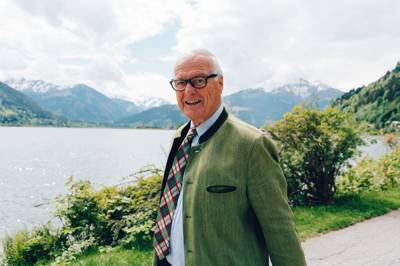The Weyringer's sculptures
Johann Weyringer and the Trinity of the Alps
Weyringer's sculptures
The triad of sculptures 'Eagle, Ibex and Flower' was sculptured by the renowned artist Johann Weyringer from Salzburg on the occasion of the opening of the Schmitten Tunnel in 1996.
Initially, the sculptures stood at the tunnel portal at the Seespitz, where the bypass tunnel leads the traffic towards 'Zell am See Center'. In 2008, they were transferred to Park Elisabeth in order to make them accessible for a broader public.

The Trinity of the Alps
The three sculptures symbolically stand for the flora and fauna of the Alps. From their current place, they look over the lake into the Hohe Tauern and enjoy the same view as the humans do.
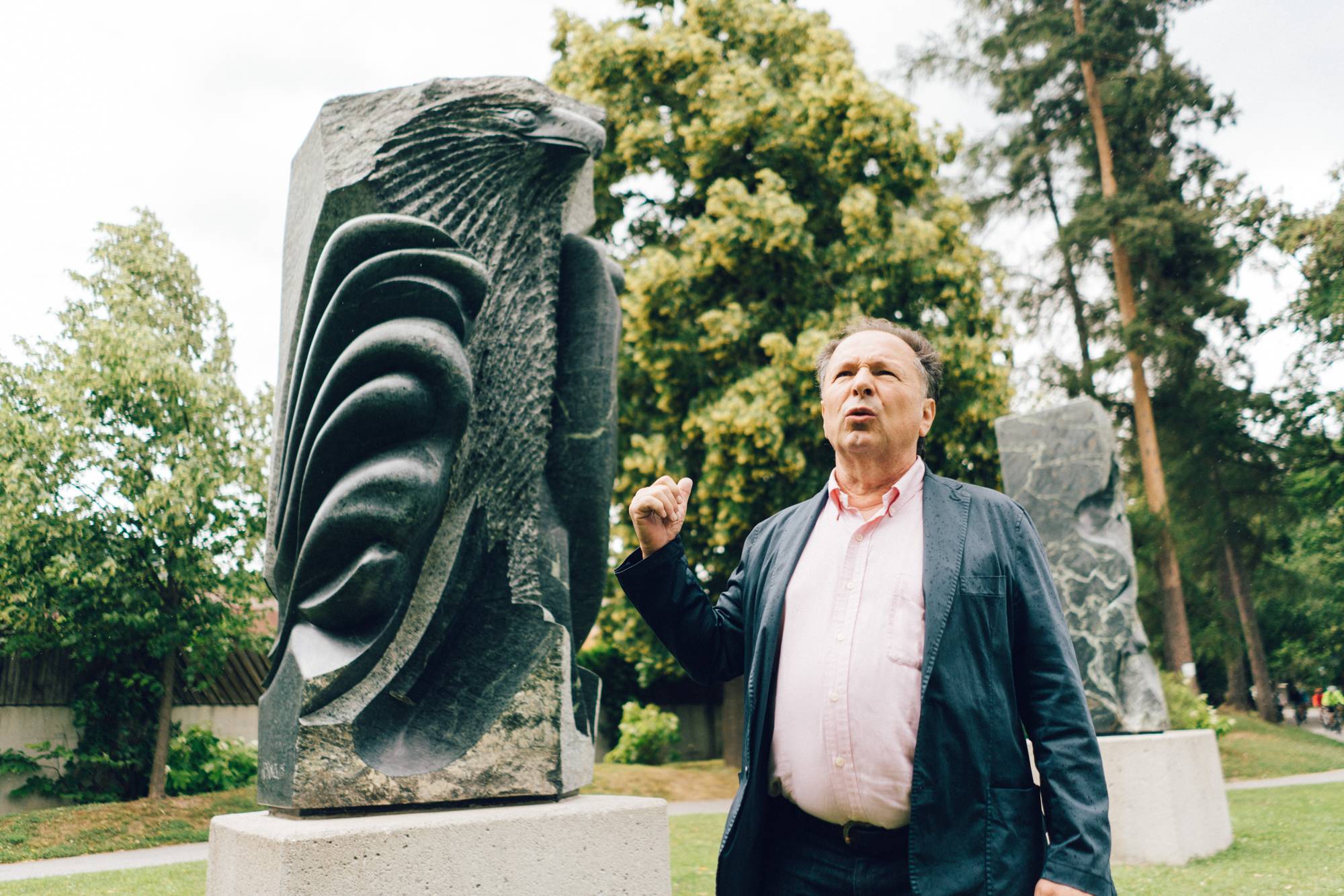
Eagle
The eagle holds a special position because it is the most popular heraldic animal of the alpine country and the sovereign of the highest summits. His view overcomes even the strict boundaries that the mountains have set the people from the year one. The Hohe Tauern also stand for 'transition' and overcoming boundaries. The view of the eagle equals the view of the people into the mountains ‒ and beyond.
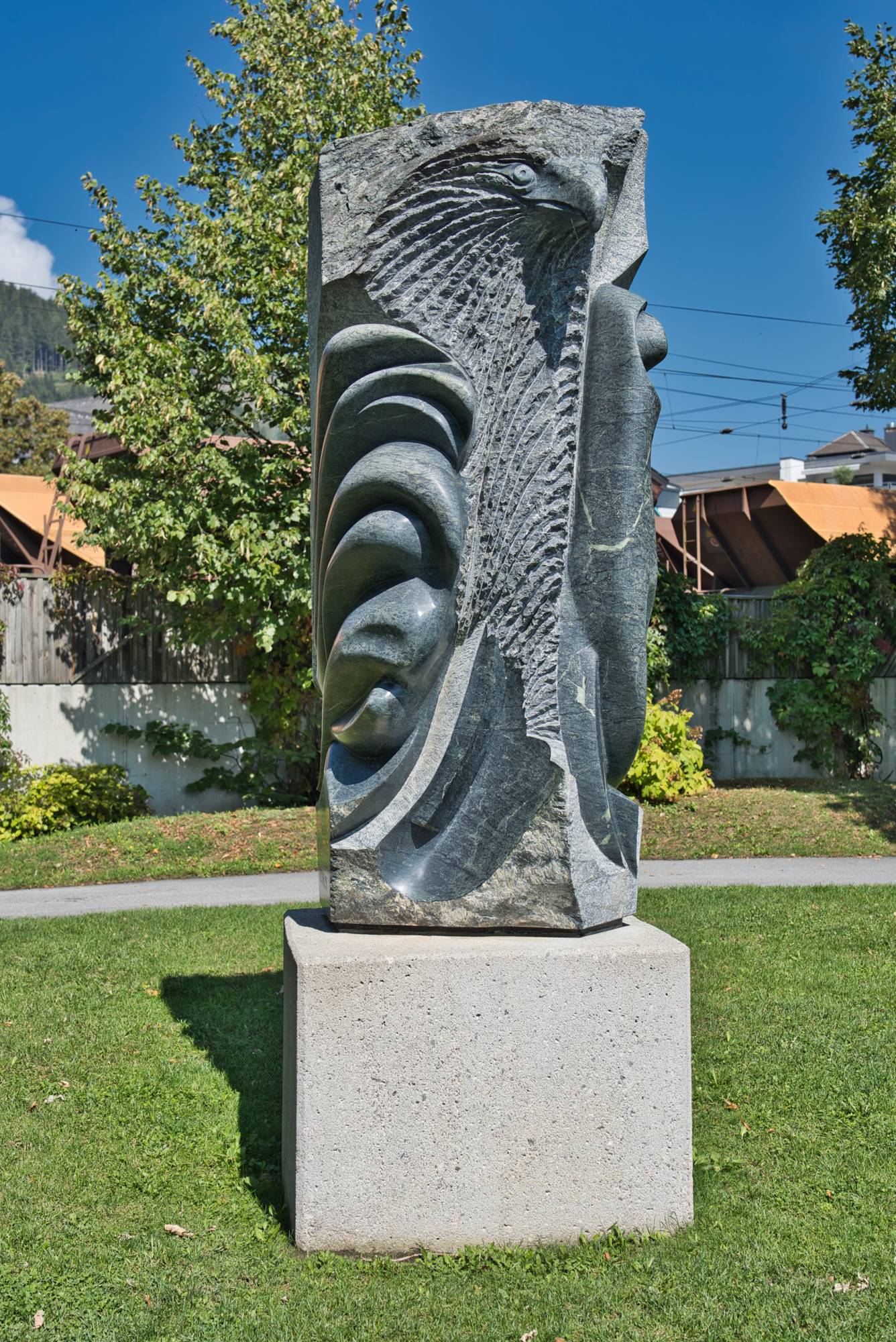
Ibex
The ibex represents the fauna of the Alps. At the beginning of the 20th century, the ibex was successfully reintroduced in the Hohe Tauern after its complete extinction. In the past, the ibex was an important provider of all kinds of goods for the people living in the Alps: the meat was used for food, the skin for clothes, the horns for potency remedy etc. Consequently, nowadays the ibex is also a memorial for an intact nature that is worth being protected.

Flower
The flower extends this thought to the flora. The trees, grasses, herbs and alpine flowers create the face of the region and deliver important raw material that enables the people to live in the mountains ‒ and make it beautiful!
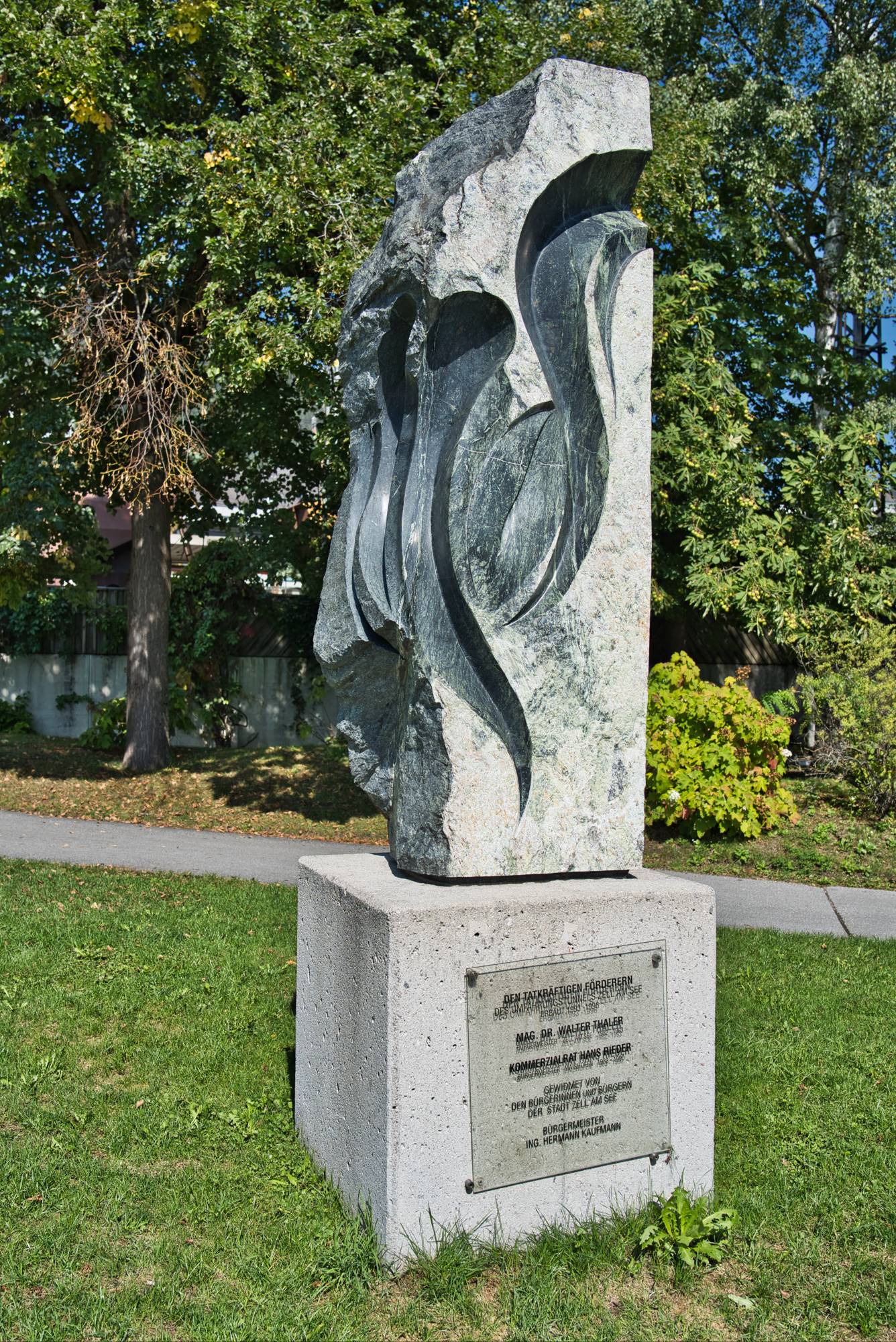
Hans Weyringer
Hans Weyringer was born in Neumarkt am Wallersee, completed an apprenticeship as a carpenter and studied architecture at the University of Applied Arts and the Academy of Fine Arts in Vienna. Since the 1960s, the avid glider pilot has visited Zell am See on a regular basis. He has always been fascinated by the view into the Alps and over the summits of the mountains that he especially enjoys in this region.
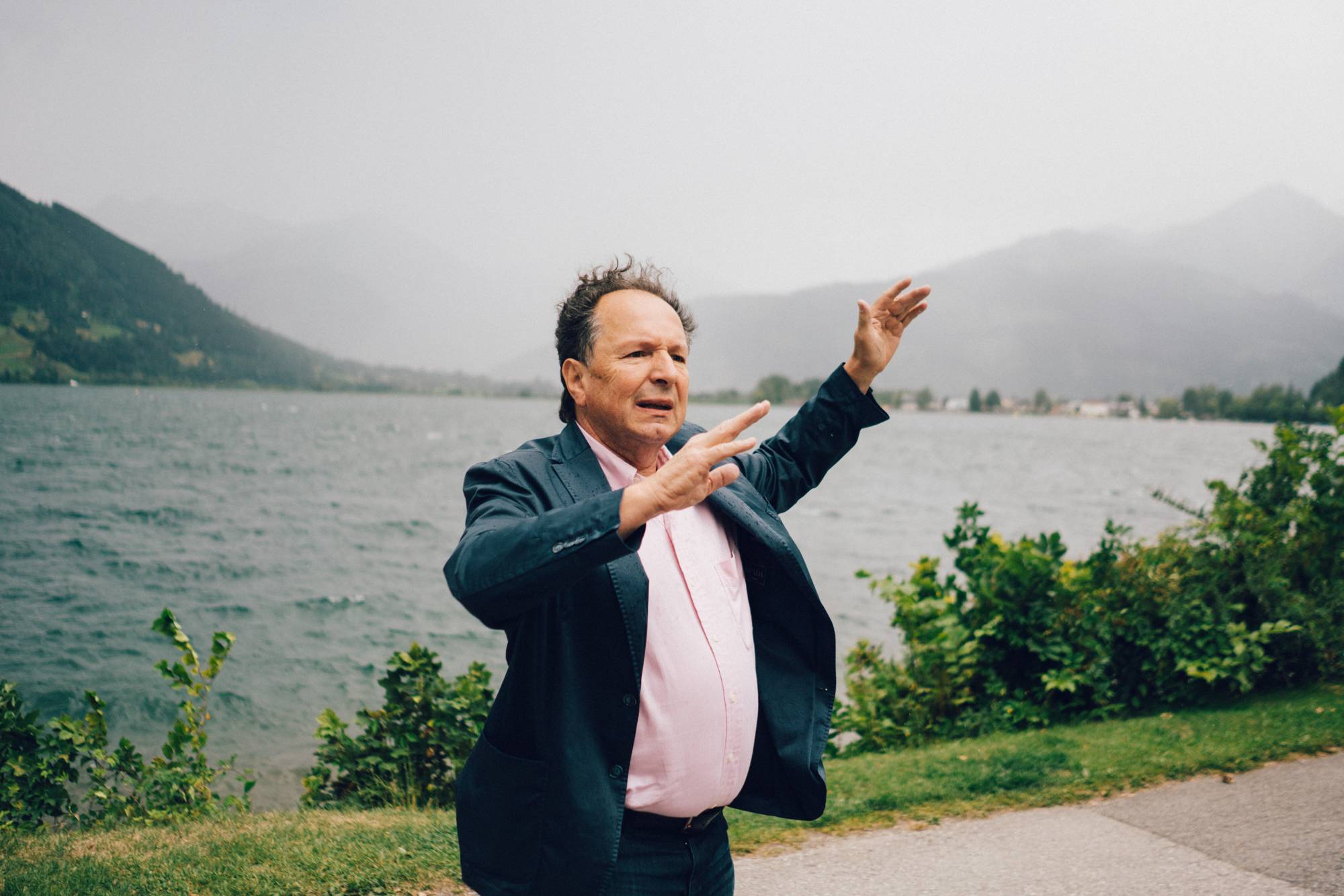
Two years of work
Weyringer worked about two years on these sculptures. They are sculpted from very hard serpentinite, a stone that is a difficult working material but all the more resistant against weather effects. Weyringer hand-picked the block of stones in a quarry in East Tyrol.
Before, he designed the sculptures and shaped them in a 1:10 clay model. During the work on the block of stones itself he was supported by two helpers. So already during their creation, the sculptures reflected this idea of symbiosis between three actors that only together create the whole ‒ just like the eagle, the ibex and the flower.
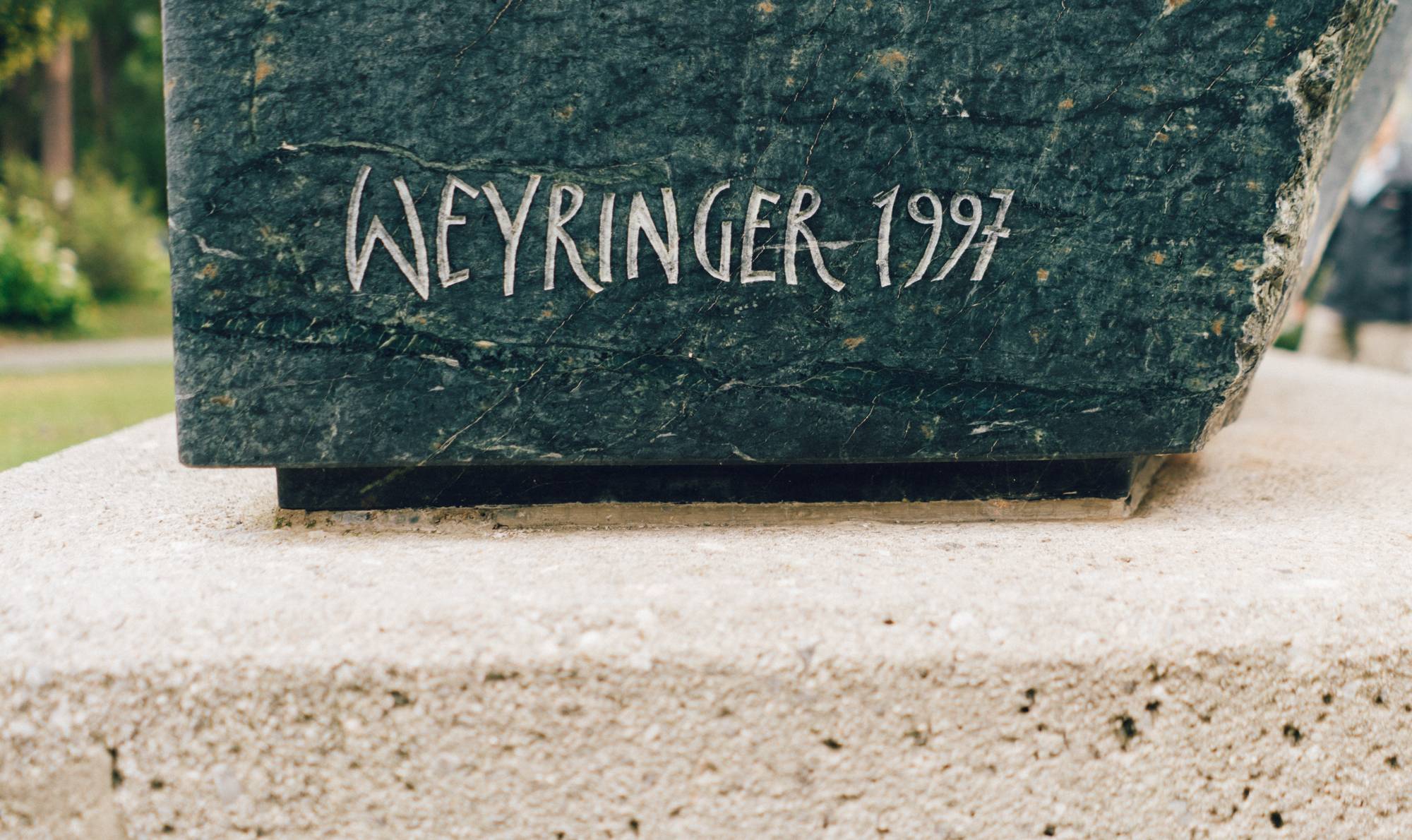
Other works
Weyringer could also leave his marks at one of the most visited places of Austria: The design of the place at the Franz-Josefs-Höhe, right at the door to the Großglockner, was one of his most prestigious works.
Other works include mural paintings (e.g. at the power plant Greifenstein) or the design of the 'Chapel of the Good Shepherd' in Thalgauegg.

